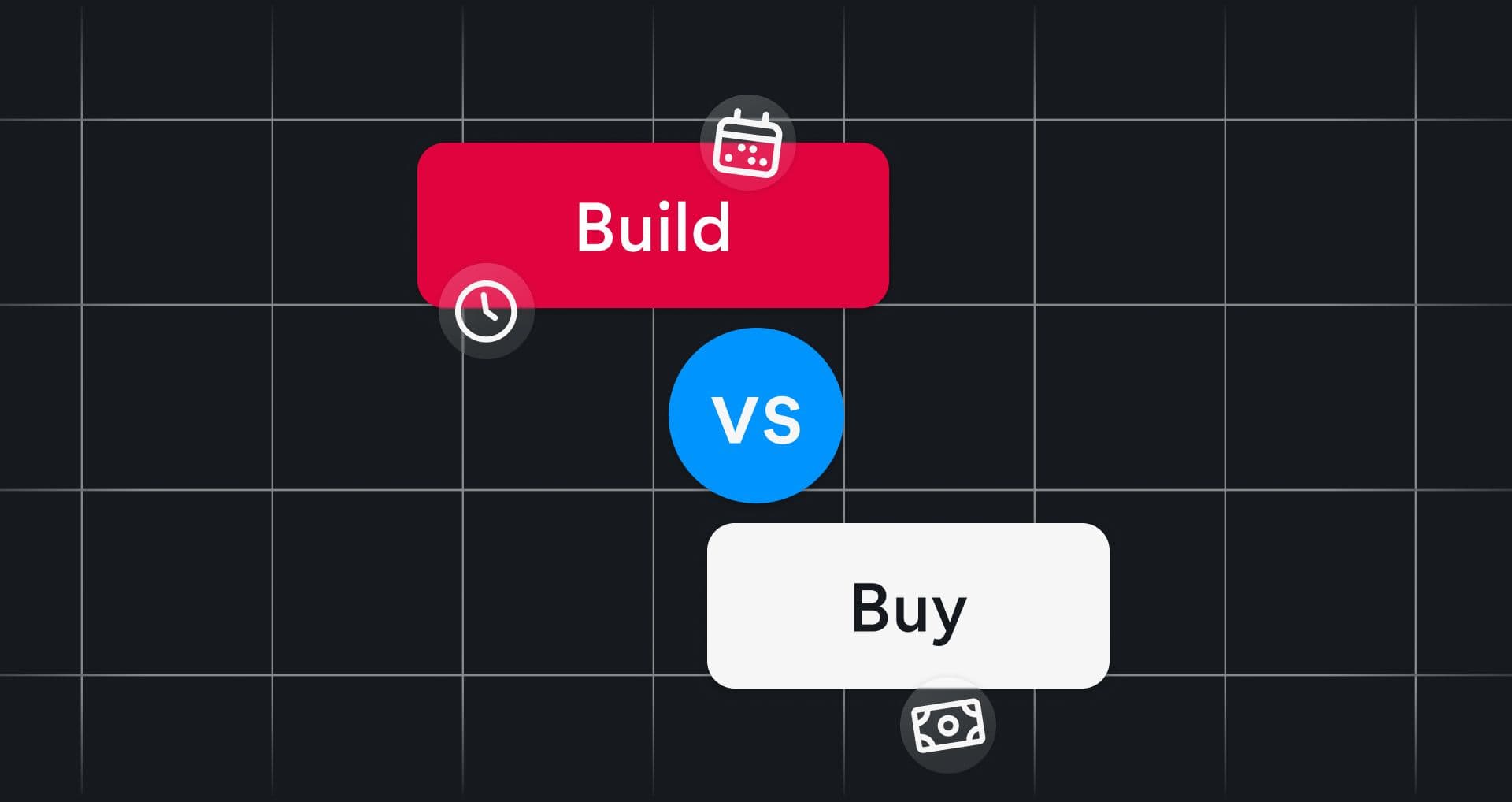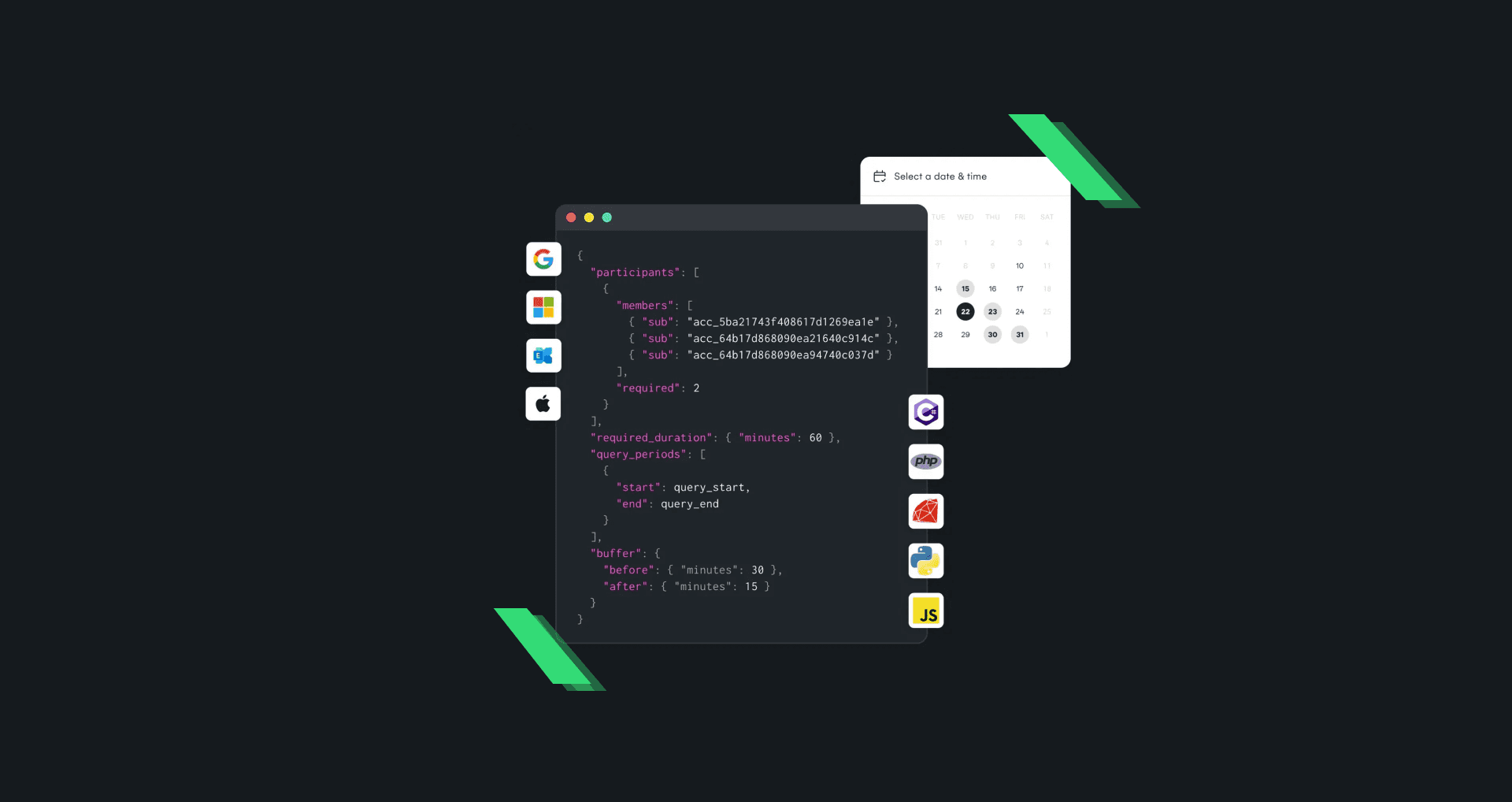Want the TL;DR? Summarize this post with:
The Best Calendar APIs for Scheduling
When teams start building scheduling functionality into their applications, the first question is often: Should we build this ourselves using Google or Microsoft APIs, or use a unified calendar API that handles the complexity for us?
It’s a question I’ve been exploring since joining Cronofy, and I recently shared my take in this blog post. After speaking with customers, developers, and product teams, one thing is clear: building your own calendar and scheduling infrastructure can seem simple at first, but the real challenges show up at scale. Managing availability, syncing updates in real time, handling time zones, and avoiding double bookings across providers quickly becomes a full-time job.
While Cronofy has powered scheduling in thousands of apps over the past decade, the appetite for Calendar APIs has continued to rise and there is now a growing list of options to evaluate as you go through your own build vs. buy debate. From platforms powering recruitment and education, to healthcare and travel, it’s clear that scheduling infrastructure is a critical component of modern apps, but not every API fits every use case.
What is a Calendar API?
A calendar API enables developers to embed calendar and scheduling functionality into their applications. It allows your app to create and manage events, check user availability, send invites, and sync with providers like Google, Microsoft, and Apple without users ever leaving your product.
When you’re evaluating calendar APIs, you’ll come across a couple of different options.
First are calendar APIs provided by major calendar providers like Google and Microsoft. They’re powerful, but they also require you to build and manage each calendar integration separately.
Providers like Cronofy, Nylas, and Cal.com offer unified calendar APIs to take away the complexity of managing calendar integrations individually. They give you a single API that can access and query all of the major calendar providers, often packaged with more advanced scheduling features like time zone handling and smart availability logic.
While Cronofy has powered scheduling in thousands of apps over the past decade, the appetite for Calendar APIs has continued to rise and there is now a growing list of options to evaluate as you go through your own build vs. buy debate.
Google Calendar API
The Google Calendar API is one of the most commonly used calendar integrations. It lets you manage events, access free/busy info, and handle notifications - but you will need to build and maintain any Google Calendar API integration yourself.
Pros
- Free to use and integrate.
- Supports creating, updating, deleting events, access to free/busy information, setting reminders, managing recurring events, and more.
- Push notifications via webhooks let you listen for event changes to maintain a more up-to-date view of availability.
Things to consider
- You may encounter errors during peak usage or when scaling across users unless quotas are manually raised.
- The API only supports Google accounts. If your users are on Microsoft, Apple, or Exchange, you’ll need to build separate integrations for each.
- Google occasionally changes the API, requiring you to monitor changelogs and update your implementation to prevent breaking changes.
Microsoft Outlook (Graph) API
Microsoft’s API provides full access to Outlook and Exchange calendars, enabling event creation, syncing, and reminders. While powerful, it also requires the handling of OAuth flows and staying ahead of API changes.
Pros
- Free to use and integrate.
- Supports webhook-based change notifications, enabling more responsive sync with proper setup and token management.
- Microsoft's API offers a single endpoint for accessing not just calendars, but also email, contacts, users, and files.
Things to consider
- Complex workflows (e.g. multi-attendee, priority routing) need to be custom-built.
- The Microsoft Graph API is large and multifaceted, which can be overwhelming for developers only needing calendar functionality.
- Microsoft evolves the Graph API frequently, and some changes can break existing implementations.
Cronofy Calendar API
Cronofy’s API offers enterprise-ready, real‑time calendar sync and scheduling with embeddable and customizable UI components - all with a 99.99% uptime guarantee. It focuses exclusively on scheduling infrastructure, letting teams build faster and avoid ongoing maintenance of integrations.
Pros
- Beyond just reading and writing events, Cronofy provides native scheduling functionality including availability querying, real-time availability APIs, meeting invite workflows and customizable UI components.
- Cronofy’s Sync Engine maintains a cache of users' availability, meaning your application only needs to make a single API call to fetch the availability of multiple calendars - helping to reduce latency and increasing reliability if your service. If a provider experiences downtime, Cronofy continues serving the most recently synced availability data, ensuring a consistent experience for users.
- Unlike solutions that frequently sunset API versions or require migrations, Cronofy prioritizes backward compatibility and long-term support to prevent surprise breaking changes.
- Cronofy prioritizes privacy with full GDPR, HIPAA and SOC 2 compliance, as well as a no-known-bugs policy. Many customers trust it to handle regulated data in healthcare, recruiting, and finance.
Things to consider
- If you’re looking for a self-hosted, open-source scheduling engine, Cronofy isn’t built for that. It's a managed SaaS infrastructure focused on reliability and scale.
- Cronofy doesn’t offer contact or email APIs like Nylas, which could be a downside depending on what you are planning to build.
Nylas Calendar API
Nylas offers a unified calendar API that covers multiple providers (Google, Outlook, Exchange, Apple) and includes scheduling-specific features like availability checks, native UI components, and notifications, all aimed at accelerating development of custom scheduling workflows.
Pros
- Beyond just reading and writing events, Nylas provides more advanced scheduling functionality including availability querying.
- Nylas offers embeddable UI widgets like scheduling pages, which help teams ship faster without having to design scheduling flows from scratch.
- Nylas supports webhook notifications for calendar events and availability changes, helping developers maintain up-to-date schedules inside their apps.
Things to consider
- Nylas recently transitioned to a new domain-specific model (v3), requiring additional logic and infrastructure to support cross-company scheduling workflows. If your platform works across multiple organizations, you may need to build additional layers or infrastructure to handle those queries.
- Nylas supports calendars, contacts, and email APIs which can be beneficial depending on your use case, but also means they don’t exclusively focus on scheduling infrastructure.
- Nylas’ backend often relies on external API calls to calendar providers for real-time data. In contrast to Cronofy’s cached sync engine, this can lead to latency or reliability issues at scale, particularly when querying many calendars.
Cal.com API
Cal.com provides an open source, REST style API that lets you self-host or use hosted scheduling components with full control over UI and scheduling flows. You get flexibility and white-label options, but self hosting your own instance brings additional operational overhead.
Pros
- Cal.com provides open-source access to their entire scheduling platform, giving developers complete control over how scheduling looks, behaves, and integrates into their environment.
- Like Cronofy, you can build highly customizable scheduling workflows with configurable rules, availability, buffers, and embedded scheduling buttons.
- Whether it’s 1:1, group, or round-robin scheduling, Cal.com supports a variety of meeting flows out-of-the-box. This flexibility makes it suitable for teams with diverse scheduling needs.
Things to consider
- Unlike API-first solutions, Cal.com expects end users to create accounts, verify emails, and interact with their interface even if they’re only using scheduling through your application.
- Running your own instance means you’re responsible for updates, uptime, bug fixing, and infrastructure costs. This can outweigh the benefits of open source if you don’t have dedicated ops support.
Which Calendar API is right for you?
Choosing a calendar API isn’t just about choosing endpoints or technical specs - it’s a decision that shapes the reliability, scalability, and user experience of your product. You’re also choosing how much time it will take your engineering team to implement and maintain it, how reliable it will be as your platform scales, and whether it’s going to create a smooth or frustrating experience for your end users.
If you're building something where scheduling infrastructure forms a critical piece of your customer experience, like hiring platforms, telehealth apps, or CRMs, investing in infrastructure that's built for scale and reliability is just as important as picking an API that gives you the endpoints you need.
Cronofy was built by developers for developers, so we understand the importance of testing integrations - you can create a free sandbox environment and connect up to 20 calendar accounts to test Cronofy with real data and real events.
If you’d rather talk through your specific use case with one of our scheduling specialists, you can book a time with them below.




